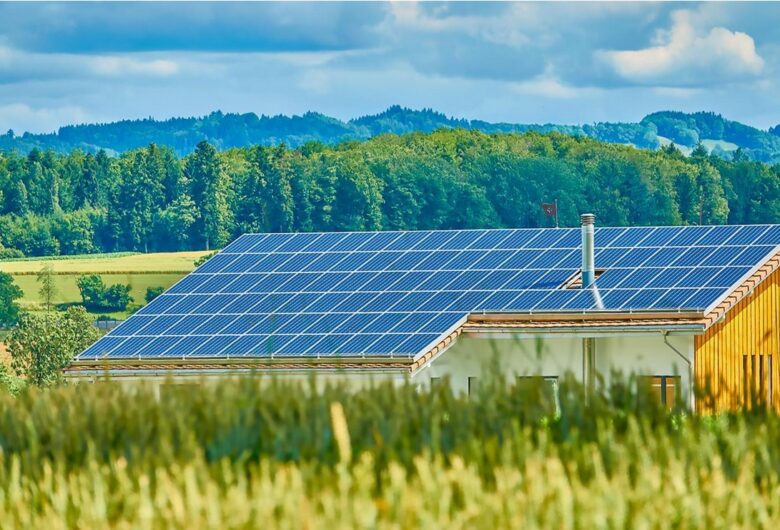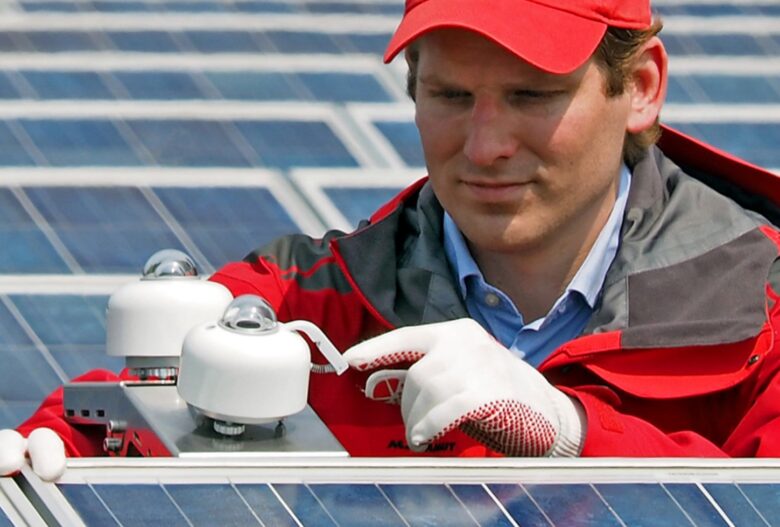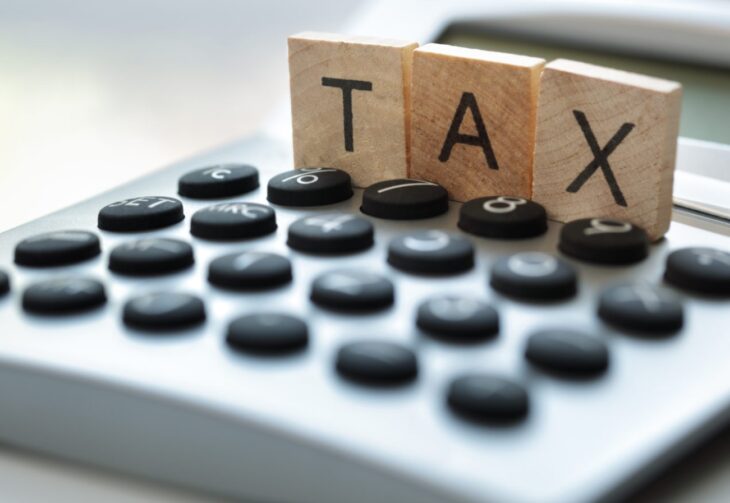A photovoltaic system absorbs energy from sunlight and converts it into free electricity available to you.
Energy efficiency and photovoltaics in particular is a topic that arouses much interest and curiosity, let’s walk through the most important steps together.
Contents
- How does a photovoltaic system work?
- What types of photovoltaic system exist?
- Off-grid or stand-alone photovoltaic system
- On-Grid or grid-connected photovoltaic system
- How much can I save with a photovoltaic system?
- Where can I install a photovoltaic system?
- Photovoltaic Incentives and Tax Deductions
- How do I choose the photovoltaic system?
How does a photovoltaic system work?
The sun is a free and inexhaustible source of energy, but most of its power goes untapped: in fact, every day the sun hits 1 square meter of the earth’s surface with the energy needed for the average consumption of a family in 1 year!
Thanks to photovoltaics, you can power electrical appliances in your:
• home – e.g. room lighting, TV, washing machine, dishwasher, oven and refrigerator – as well as the heating such as heat pumps and electric stoves.
• business – using during the working day free energy for lighting and heating offices, or for production facilities.

What types of photovoltaic system exist?
The photovoltaic system consists of a series of modules (photovoltaic solar panels), the number of which varies depending on the total power output in kW (kilowatts).
For example: no. 10 monocrystalline photovoltaic panels of 300 Wp make up a 3 kW photovoltaic system.
[Please note, photovoltaic panels are not to be confused with solar thermal panels, which instead convert solar energy into thermal energy for domestic hot water production].For those who decide to install a photovoltaic system while remaining connected to the national grid, the energy produced by the photovoltaic system can be: immediately self-consumed or fed into the national grid by taking advantage of the on-site exchange.
On-site exchange is a true interchange: Thanks to photovoltaics, we become producers of energy and can “sell” it to Enel. Our electricity fed into the grid is metered and valued, thus receiving a subsidy that reimburses part of the expenses on the bill.
What happens when the PV system does not produce or produces too little, such as at night or when the light is too weak? The system automatically takes the electricity we need from the grid.
Off-grid or stand-alone photovoltaic system
The stand-alone photovoltaic system, also called stand-alone or island system, is the choice of those who want to achieve total energy independence. It is certainly the perfect solution for buildings such as cabins and farmsteads in isolated mountain or agricultural areas, or for RVs.
The energy produced by photovoltaics is self-consumed in real time and stored in storage batteries.
It works with automatic systems to manage energy flows and charging or dispensing priorities. Off-grid PV does not involve on-site exchange, as there is no grid connection.
The photovoltaic accumulator is a battery with a small size that releases electricity on an as-needed basis, such as when the system is not producing or its energy is not sufficient to cover instantaneous needs.

Source: en.wikipedia.org
On-Grid or grid-connected photovoltaic system
The grid-connected PV system allows maximum freedom to manage consumption according to one’s needs.
Think of the case where parents work and children are at school, the house remains off for most of the day while the PV produces. Thanks to storage batteries, even in the evening, night, and early morning you can take advantage of the energy produced by PV during sunny hours and store it.
In addition, excess energy can be fed into the national grid and valued through on-site exchang
As with Photovoltaics, the accumulator can also enjoy a 50% deduction on the total investment.
How much can I save with a photovoltaic system?
To date, it is possible to return from the investment on photovoltaics as early as the 4th year. Yield and savings of photovoltaic system vary according to climatic region, characteristics and consumption habits. Therefore, tailor-made analysis and advice are strictly necessary.
Let’s take an example: The average annual consumption of a family of 3-4 people is 3,000-4,000 kW. With a standard 3 kW photovoltaic system, it is possible to save between 35% and 70% on electricity bills each year.
By adapting one’s energy consumption habits to the operation of the system and with a complete system of storage batteries, self-consumption rises to 90-95%.

Source: forbes.com
Where can I install a photovoltaic system?
Usually you need 6-7 sq m for each kW of photovotaic system power. For a 3 kW system you need between 18 and 21 sq m sloping roof, pitched roof, canopy, ground.
To absorb maximum solar energy, the perfect tilt of photovoltaic panels is 30°. It can be as low as 15° and 45°, otherwise efficiency is lost.
The optimal orientation of a photovoltaic system is toward the South, but other cardinal points can also be taken advantage of. Only pure North is inadvisable. Today, photovoltaic modules are built with increasingly high-performance technologies and materials, allowing them to approach maximum efficiency even in cases where orientation and tilt conditions are not ideal.
Power optimizers are useful for those who are constrained to install panels in uneven exposure conditions, such as when PV is affected by shading caused by other roofs, trees, or chimneys.
Do permits need to be obtained to install a photovoltaic system?
All that is needed to install photovoltaics is a building permit, that is, a declaration of commencement of work. Very often it is the installing company that takes care of all the paperwork management (permits, Gse, Enel) offering a turnkey service.
If the area where the photovoltaic is installed is subject to environmental and urban planning constraints, it is necessary to file for a landscape permit.
If you live in a condominium and wish to install photovoltaics, it is necessary that the system:
- does not affect the stability, safety and decorum of the building
- does not impede access to common parts of the roof
- respects the millesimal division of common spaces
Once these conditions are met, the administrator calls a meeting at which the owners of condominium apartments are notified of the project.

Source: tullfinancial.com
Photovoltaic Incentives and Tax Deductions
Energy Efficiency has become increasingly central to the development of both businesses and new homes. For this reason, Italy has decided to incentivize interventions for the installation of renewable energy plants and systems.
Until December 31, 2018, if you install a home-residential photovoltaic system, you are entitled to a 50 percent irpef deduction, along with a 10 percent preferential vat.
The deduction is a discount on the taxes payable, given in 10 equal annual installments. This allowance is generally available for the purchase of furnishing furniture and large household appliances (at least class A+), and for renovation and building rehabilitation work including photovoltaics
Super Depreciation at 130% incentivizes Italian companies to invest in capital equipment, which includes photovoltaic systems.
The investment cost for photovoltaics is increased by 30% for tax deduction purposes through annual depreciation allowances.
It is intended for individuals with business income and professionals with self-employment income, including those carried out in associated form, resident in Italy.
How do I choose the photovoltaic system?
Only thanks to the Technical Inspection, the installation company can offer you a free, reliable and professional estimate.
In order to find the right power in kW of the system and the most suitable solution for your needs, during the interview and technical inspection, the company
installer analyzes:
- installation surface – available space, presence of obstacles to the irradiation of the modules, orientation and inclination
- energy consumption – bimonthly and annual, future estimation
- consumption habits – mode, distribution, peak times, devices to be powered
Thus, the right size and cost of the PV system can be determined, along with the savings plan and payback time of the investment.
